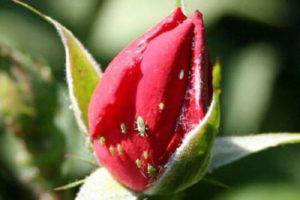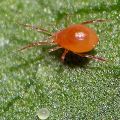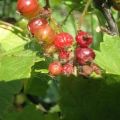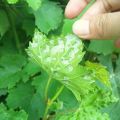How to deal with chemicals and folk remedies with spider mites on roses
Roses are a blooming garden decoration that needs regular maintenance. What to do if a spider mite has settled on your favorite roses, how to deal with a pest and save delicate flowers? The spider mite is a dangerous pest for plants, as it uses flower juices as food, roses begin to lose strength, the growth rate slows down, the buds fall off. Consider ways to combat the pest and determine the first signs of infection.
Spider mite description
A spider mite is a microscopic pest that can cause tremendous damage to a cultivated plant. The pest is an insect with an oval body, 0.5 mm long. It is difficult to notice such an insect with the naked eye, therefore, the disease is often detected already at an advanced stage.
The spider mite colonies on the plant, the pest can be found on the back of the leaves, on which a barely noticeable cobweb is formed, under which the larvae and adults of the spider mite live.
Females are larger than males, in larvae, unlike adults, 6 legs, not 8. The color of the pest is different: from light green to brown. Under the microscope, brown specks can be seen on the body of the tick. The lower part of the insect is flat, and the upper part is convex.
The parasite hibernates on the plant, hibernating during the cold season. In spring, with the arrival of heat, the pest comes to life and resumes active life on the affected plant. On indoor plants, the mite parasitizes all-season.
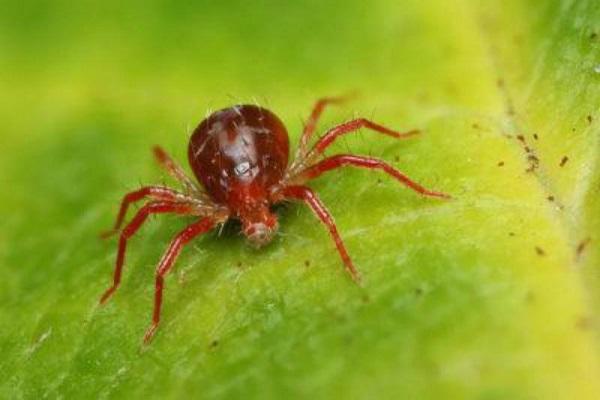
Danger to the plant
Feeding on plant juices, mites cause great harm to plantings of vegetables, fruit trees, flower beds. The plant loses its vitality, the growth rate slows down, foliage begins to fall off, buds and fruits are deformed.
The pest is able to multiply rapidly and move to neighboring plants. If you do not take timely measures to protect roses from ticks, you can lose some of your favorite bushes in a short time.
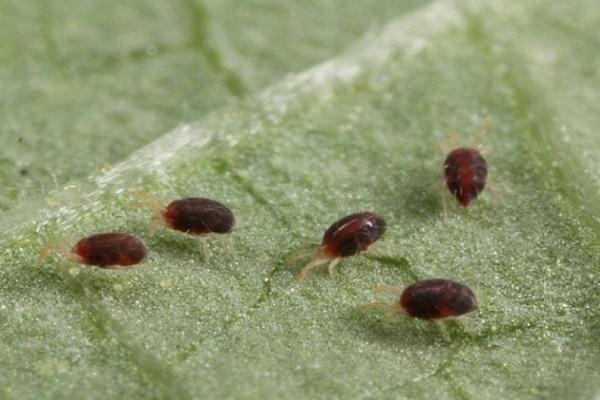
Causes of the appearance of a pest on flowers
Spider mites attack roses, usually from neighboring plants. The tick is transferred especially quickly in the garden space in windy dry weather.
Birds that feed on the gluttonous parasite can reduce the likelihood of infection.
The tick can be partially washed off by rain, the insect is inactive on cold, rainy, cloudy days.
Roses are whimsical plants that need regular weeding and sanitary pruning.It is known that in neglected flower beds, overgrown with weeds and dead vegetation, the risk of disease outbreaks and pest infestation is high. Rose bushes must be cleaned of faded inflorescences and dead shoots.
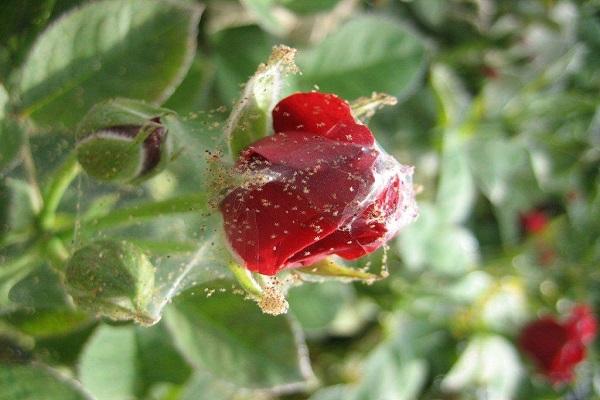
Signs of infection
The main signs of a spider mite infection of roses:
- The plant slows down its growth rate.
- The leaves of flowers are covered with white or black dry spots.
- There is a cobweb on the back of the leaf plate.
- Buds and leaves fall off.
Every gardener should regularly inspect the plants in their area for signs of pest infestation. If the first signs of an illness are detected, it is recommended to take immediate action. In case of severe infection, the use of insecticides is required.

How to deal with a spider mite on a rose?
If a spider mite was detected at an early stage of the disease, you can use folk remedies, if the area of infection is large, larvae appeared on the leaves, and roses began to throw off the buds, you cannot do without the use of chemicals.
Preventive treatment of flower beds must be done if plants that have been attacked by spider mites have been identified in the surrounding areas. It is worth remembering that this insidious parasite is not afraid of cold weather and staunchly endures winters on the affected plant, in spring the insect wakes up with the first thaws.
Chemicals
Infected plants can be treated with insecticides. Consider modern means of the chemical industry to combat insects on roses, in particular with spider mites.
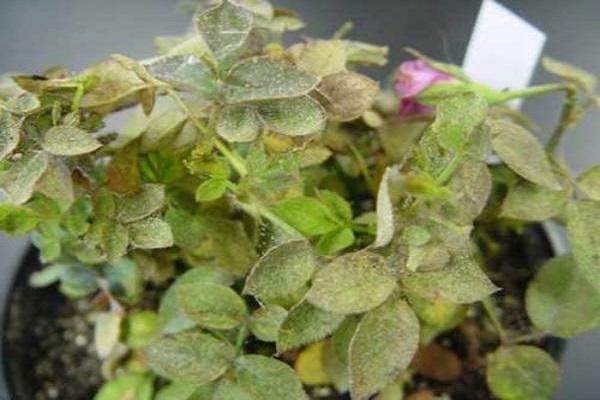
Fitoverm
A potent insecticide with a wide range of effects, belongs to the latest generation of biological preparations. Fitoverm is safe for people and can be used on vegetable and fruit plantations.
Produced in liquid form, the active ingredient is aversectin-C. After using the drug on roses, the spider mite disappears on the third day. Fitoverm is a biodegradable agent that does not accumulate in plant fruits, belongs to the 3rd hazard class, and is not toxic.
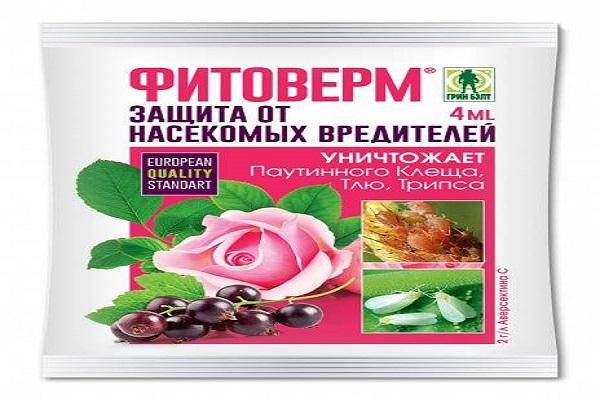
"Actellik"
Non-systemic chemical insecticide. That is, the active substance of the drug acts only on insect pests, does not enter the plant, therefore, it does not accumulate in the fruits. "Actellic" refers to long-acting drugs, excluding the possibility of re-infection.
The active ingredient is pirimiphos-methyl. After treatment, the tick leaves the plant within two hours. The drug can only be used outdoors, the agent is toxic, not suitable for treating plants in room conditions.
Apollo
Contact insecticide of ovicidal action, destroys larvae and adults of spider mites on roses, prevents their further reproduction. Does not harm treated plants, affecting only the pest. The active ingredient is clofentezine. The drug is safe for bees and humans.
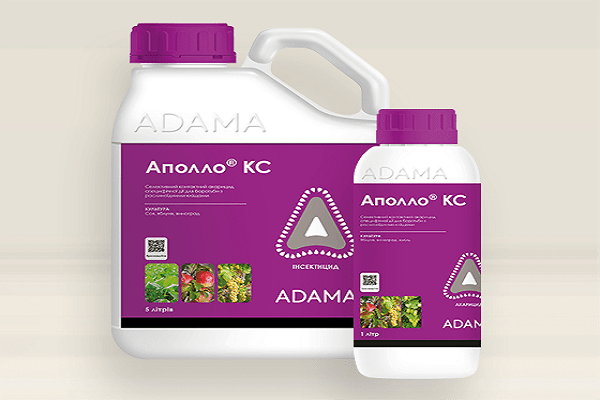
Differs in a long period of action, it is enough to carry out one treatment of plants per season. Apollo is available in the form of a liquid concentrate, which must be diluted with water.
Floromite
A potent insecticide with intestinal action. The active ingredient is biphenazate, which affects all stages of spider mite development. Safe for humans, bees and treated plants. Ticks die within three days after treatment.
Floromite is produced in the form of a liquid concentrate, which must be diluted with water.

Folk remedies
You can get rid of gluttonous parasites with the help of folk remedies. Such drugs are environmentally friendly and effective enough.In case of severe infection, several treatments will be required.
Infusion of garlic
Ready-made garlic extract can be purchased at the pharmacy; it is enough to dilute the product in water and spray the infected roses with a spray bottle.
Garlic infusion can also be prepared independently, at home from cloves. To do this, the garlic is peeled and ground with a garlic press at the rate of 1 head per 1 rose bush. Crushed garlic is poured with warm water in a small amount and insisted for three days. Then the concentrate is filtered, diluted with water and poured into a spray bottle.
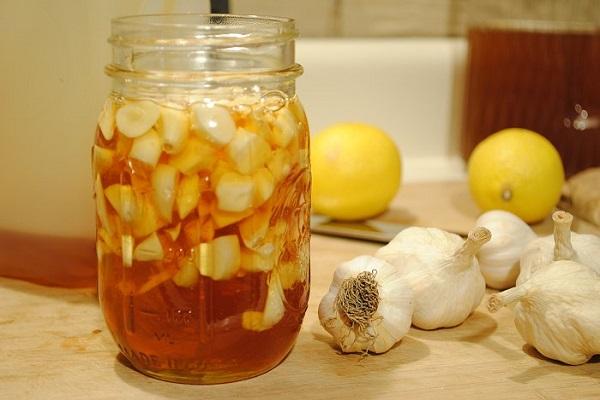
The tool can be used as a prophylactic, the first treatment is recommended in early spring.
Soap solution
Laundry soap is used in horticulture as a remedy for a large number of insect pests. The soap is crumbled with a coarse grater and dissolved in water. The concentrate can be applied to a diseased plant with a sponge or with a spray bottle.
The sprayed agent is left on the leaves for several hours, and then the bushes are rinsed with clean water.
Dandelion infusion
Extract from dandelion roots is a time-tested remedy for combating spider mites. Dandelion roots are washed and grated, soaked in warm water for 48 hours. Then the agent is filtered and poured into a spray bottle.

For greater efficiency, the treatment is carried out several times, after spraying the roses are sprinkled with wood ash or mustard powder.
How can I prevent its occurrence?
To protect roses from invasions of insect pests, preventive measures are taken to protect:
- Sanitary pruning of bushes three times per season.
- Maintaining optimal humidity levels.
- Foliar dressing with iodine and brilliant green solution.
- Regular inspection of plantings for signs of disease and infestation.
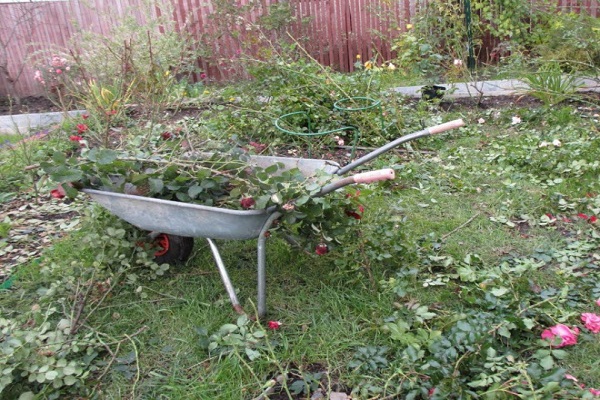
The best way to deal with spider mites is prevention. Roses are whimsical plants that need periodic treatment with insecticides. It is especially important to spray the flowers before the first flowering, during the budding period. They use long-acting drugs, carry out preventive treatments with folk remedies several times during the season.
Please note that any selected agent must be applied to the sheet plates on both sides.
The main habitat of the spider mite is the inner side of the leaf.

